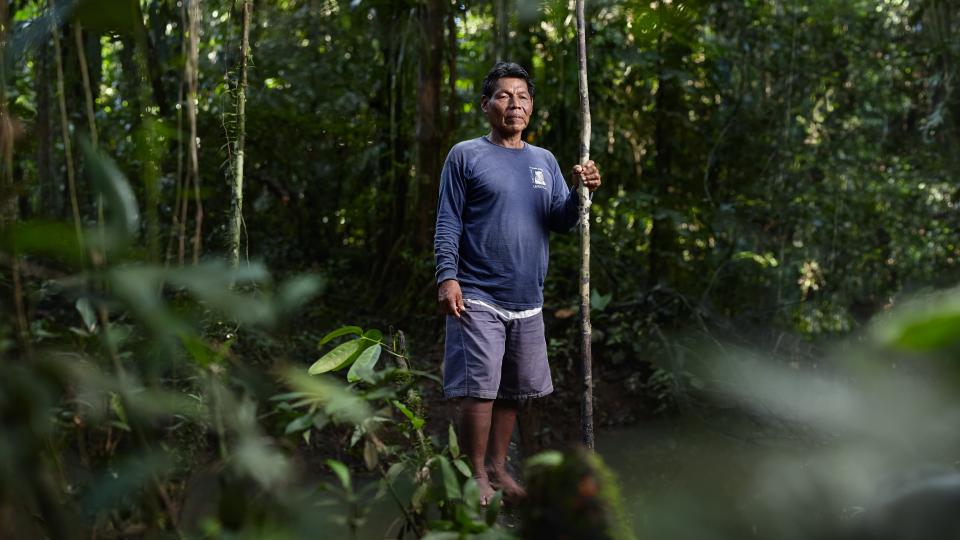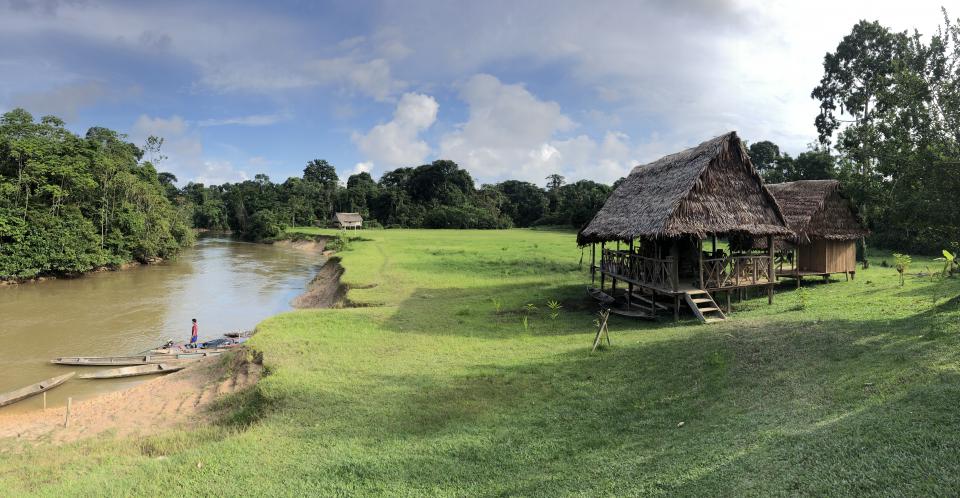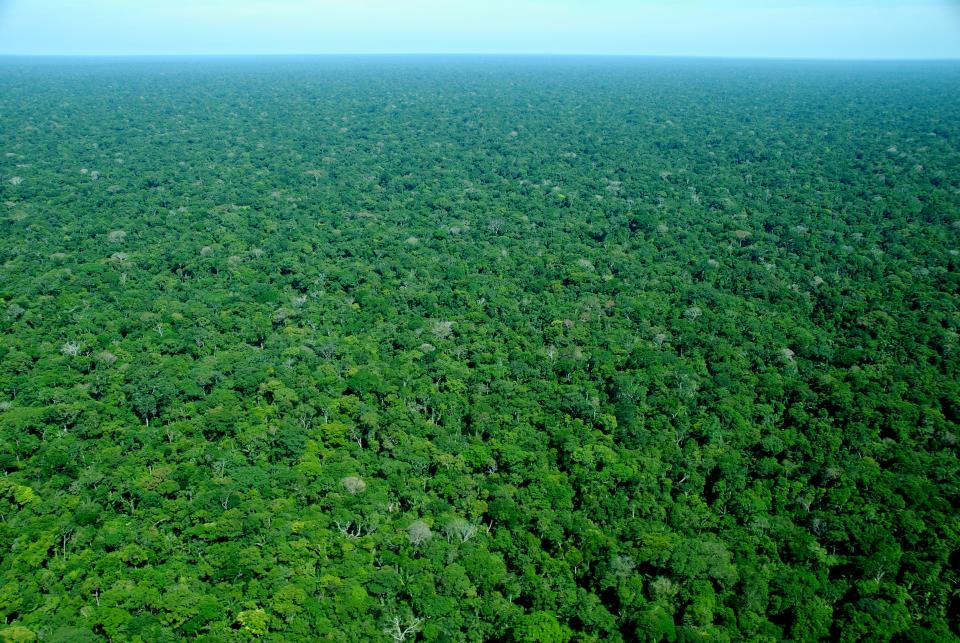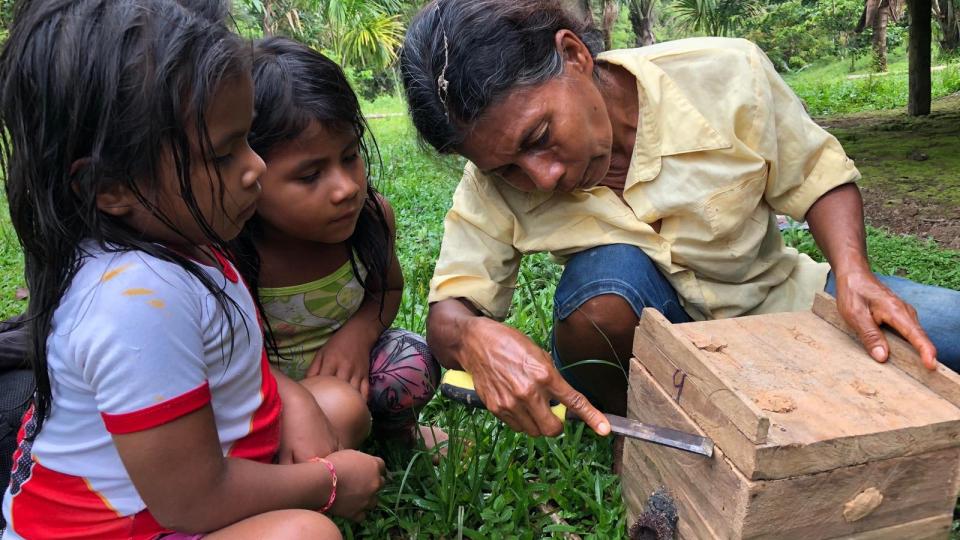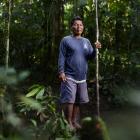When the loggers came, they began destroying our forest. Then, they depleted the animals. Sometimes the loggers poisoned the whole river to catch fish. We barely ate for five years. Our children went hungry because the loggers ate everything.
—Sebastián Ríos Ochoa, Maijuna leader
The Amazon Rainforest is in crisis. Logging, industrial agriculture, dam construction, oil extraction, and other forms of destruction are endangering the survival of indigenous groups and having dramatic impacts on ecosystem services that support life throughout the world. The Maijuna, an endangered indigenous group in the Peruvian Amazon, have been fighting for biological and cultural survival in the midst of these sweeping transformations imposed by broader society. With an average family income of less than two euros a day, they are searching for environmentally and socially responsible ways to earn a living in their rainforest communities.
Numbering fewer than 500, the Maijuna live in four communities accessible only by boat or a multi-day trek through the rainforest. First contacted by Jesuit missionaries in 1682, their population declined dramatically due to epidemics, fighting, and then enslavement during the rubber boom. Over the years, Maijuna traditional beliefs, language, and ways of life have been undermined by missionary teachings, the patrón system, ill-conceived government policies, regional society, and the formal education system.
In today’s world, Maijuna interact in ever-increasing ways with broader society while striving to maintain their close relationship with the land. They hunt, fish, grow crops, and collect non-timber forest products such as fruits and medicinal plants. For income, they sell a variety of rainforest products, crops, and crafts made with palm fibers. They cut lumber to build homes and weave roofs with palm thatch.
Following decades of hardship caused by illegal logging, poaching, and other exploitation of the resources on which they depend, in 2015 the Maijuna and allies successfully pushed the Peruvian government to create a 391,039-hectare regional conservation area that legally protects their ancestral homeland. Evidence in support of this initiative was assembled through five years of participatory mapping by Maijuna from all four communities, facilitated by Michael Gilmore in his long-term community-based work with the Maijuna. The identification of more than nine hundred sites of biological and/or cultural significance demonstrated the need for a conservation area, with a remote central region serving to maintain species of ecological, economic, and cultural importance.
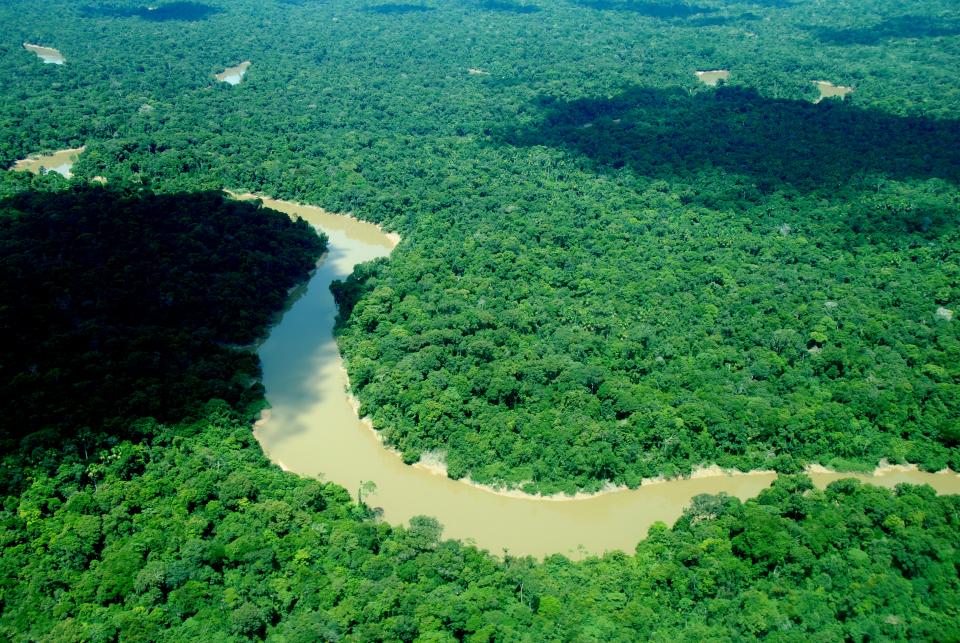
The Algodón River, a vital resource to the Maijuna for fishing and transportation.
The Algodón River, a vital resource to the Maijuna for fishing and transportation.
© Alvaro del Campo. Courtesy of the Field Museum of Chicago.
Used by permission.
The copyright holder reserves, or holds for their own use, all the rights provided by copyright law, such as distribution, performance, and creation of derivative works.
Empowered with co-managing their new reserve, the Maijuna have begun implementing conservation strategies designed to sustain their traditional way of life for generations to come. Instead of cutting down trees to harvest honey, for example, they have learned to sustainably raise native stingless bees in hive boxes. Rather than cutting down palm trees, they now harvest fronds and fruit while leaving the trees standing. Building on their traditional ecological knowledge (TEK), the Maijuna are collaborating with scientists to implement conservation practices and study the resulting impacts on key wildlife species. Camera traps and GPS-based hunter tracking studies have indicated a resurgence of ecologically and culturally important wildlife, including monkeys, tapirs, jaguars, and peccaries.
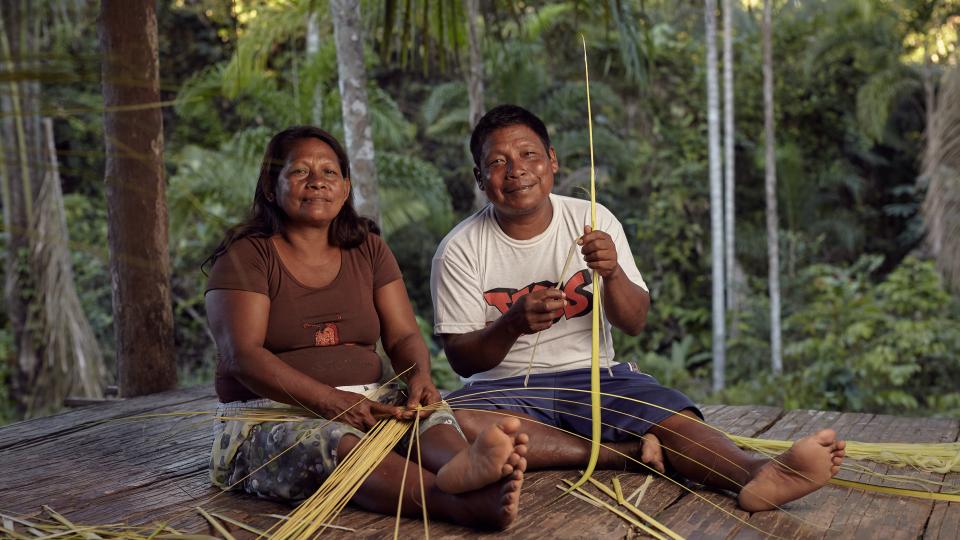
Sustainably extracting fiber from a rainforest palm tree in Maijuna lands.
Sustainably extracting fiber from a rainforest palm tree in Maijuna lands.
© Wilfredo Martinez. Courtesy of OnePlanet, Inc.
Used by permission.
The copyright holder reserves, or holds for their own use, all the rights provided by copyright law, such as distribution, performance, and creation of derivative works.
Concerted efforts by the Maijuna for long-term sustainability are threatened by a government plan to build a 130-kilometer-long road and a 10-kilometer-wide development corridor directly through the heart of their new reserve. This highway, which would cross into Colombia, was declared a national priority by the Peruvian Congress in 2011 and is part of a development plan for the border area between the two countries. If built, it would bisect the conservation area, opening up its remote core for oil-palm production, colonization, and other types of development. This would imperil the natural resources on which the Maijuna depend, and destroy areas they consider to be sacred or culturally vital. Regrettably, the Maijuna have not been properly consulted on this megadevelopment project, as required by Peruvian law. Similar issues confront indigenous groups elsewhere in the Amazon. A proposed 277-kilometer road in southeastern Peru, for example, would threaten 275,000 hectares of primary rainforest. In 2017, the Peruvian Congress declared this road a national priority even though it would pass through two indigenous reserves and a national park along Peru’s border with Brazil.
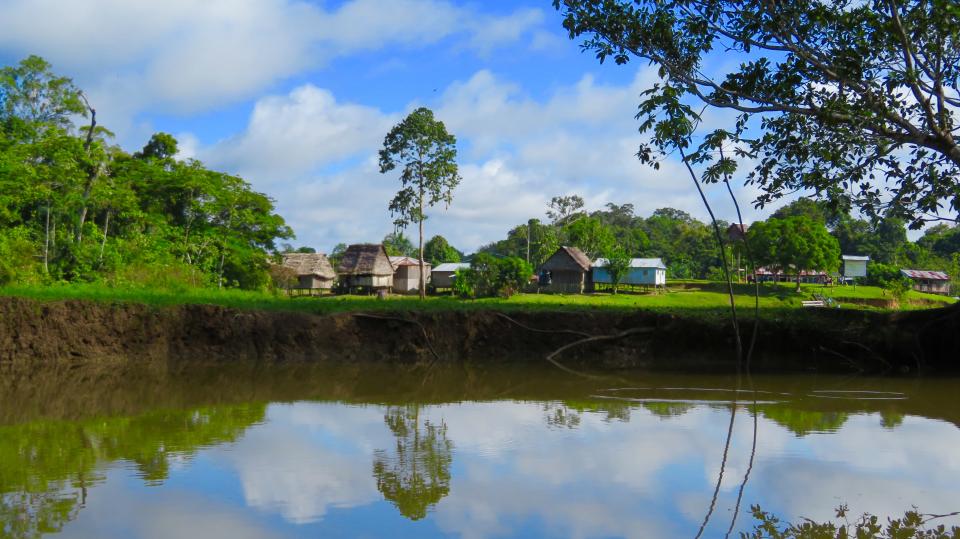
Sucusari, a Maijuna community on the Sucusari River in Loreto, Peru.
Sucusari, a Maijuna community on the Sucusari River in Loreto, Peru.
© Nancy Trautmann.
Courtesy of the Morpho Institute.
Used by permission.
The copyright holder reserves, or holds for their own use, all the rights provided by copyright law, such as distribution, performance, and creation of derivative works.
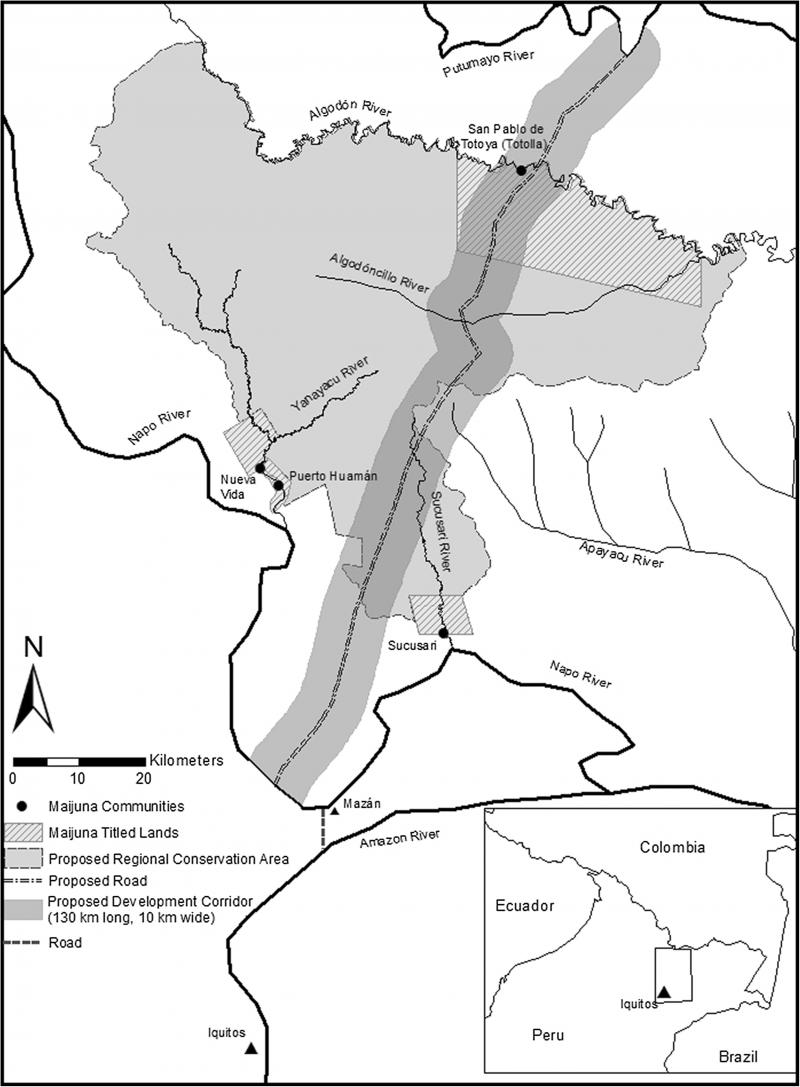
Map showing the proposed road and development corridor that would bisect the Maijuna-Kichwa Regional Conservation Area designed to protect the ancestral homeland of the Maijuna.
Map showing the proposed road and development corridor that would bisect the Maijuna-Kichwa Regional Conservation Area designed to protect the ancestral homeland of the Maijuna.
© Jason Young, University of Washington
Used by permission.
The copyright holder reserves, or holds for their own use, all the rights provided by copyright law, such as distribution, performance, and creation of derivative works.
Development projects such as these deny the basic human rights of indigenous peoples to maintain their traditional ways of life on their ancestral homelands. In recognition of the fact that both natural and cultural resources are indispensable in sustaining indigenous ways of life, the concept of “biocultural rights” was put forward by George Mason University faculty members Cher Weixia Chen and Michael Gilmore. Applied to proposed development projects such as the construction of highways through conservation areas, recognition of biocultural rights could give holistic legal protection to biologically rich and culturally important indigenous lands.
Protecting traditional ways of life for the Maijuna and other indigenous peoples is a matter of social justice, even when it conflicts with broader economic and political forces. It also is a matter of planetary health because of the key role played by primary intact rainforests in stabilizing climate and driving carbon, oxygen, and water cycles—not just locally but globally. The Maijuna and similar indigenous cultures deserve the right to survive, and human life throughout the planet depends on granting them the right to do so.
How to cite
Trautmann, Nancy, and Michael Gilmore. “The Maijuna: Fighting for Survival in the Peruvian Amazon.” Environment & Society Portal, Arcadia (Autumn 2019), no. 46. Rachel Carson Center for Environment and Society. doi.org/10.5282/rcc/8956.
ISSN 2199-3408
Environment & Society Portal, Arcadia
 This work is licensed under a Creative Commons Attribution 4.0 International License.
This work is licensed under a Creative Commons Attribution 4.0 International License.
2019 Nancy Trautmann and Michael Gilmore
This refers only to the text and does not include any image rights.
Please click on an image to view its individual rights status.
- Blackman, Allen, Leonardo Corral, Eirivelthon Santos Lima, and Gregory P. Asner. “Titling Indigenous Communities Protects Forests in the Peruvian Amazon.” Proc Natl Acad Sci USA 114 (2017): 4123–128.
- Branford, Sue, and Maurício Torres. “Amazon’s Fate Hangs on Outcome of War between Opposing Worldviews.” Mongabay, 27 April 2017.
- Chen, Cher Weixia, and Michael Gilmore. “Biocultural Rights: A New Paradigm for Protecting Natural and Cultural Resources of Indigenous Communities.” The International Indigenous Policy Journal 6 (2015): 2–15.
- Erickson-Davis, Morgan. “New Reserve in Peru Will Protect Nearly a Million Acres of Pristine Forest.” Mongabay, 26 June 2015.
- Finer, M., and S. Novoa. “Proposed Road Would Cross Primary Forest along Peru-Brazil Border.” MAAP 76 (2018).
- Gilmore, Michael P., Corine Vriesendorp, William S. Alverson, Álvaro del Campo, Rudolf von May, Cristina López Wong, and Sebastián Ríos Ochoa, eds. Perú: Maijuna. Chicago: The Field Museum, 2010.
- Gilmore, Michael P., and Jason C. Young. “The Use of Participatory Mapping in Ethnobiological Research, Biocultural Conservation, and Community Empowerment—A Case Study from the Peruvian Amazon.” Journal of Ethnobiology 32, no. 1 (2012): 6–29.


